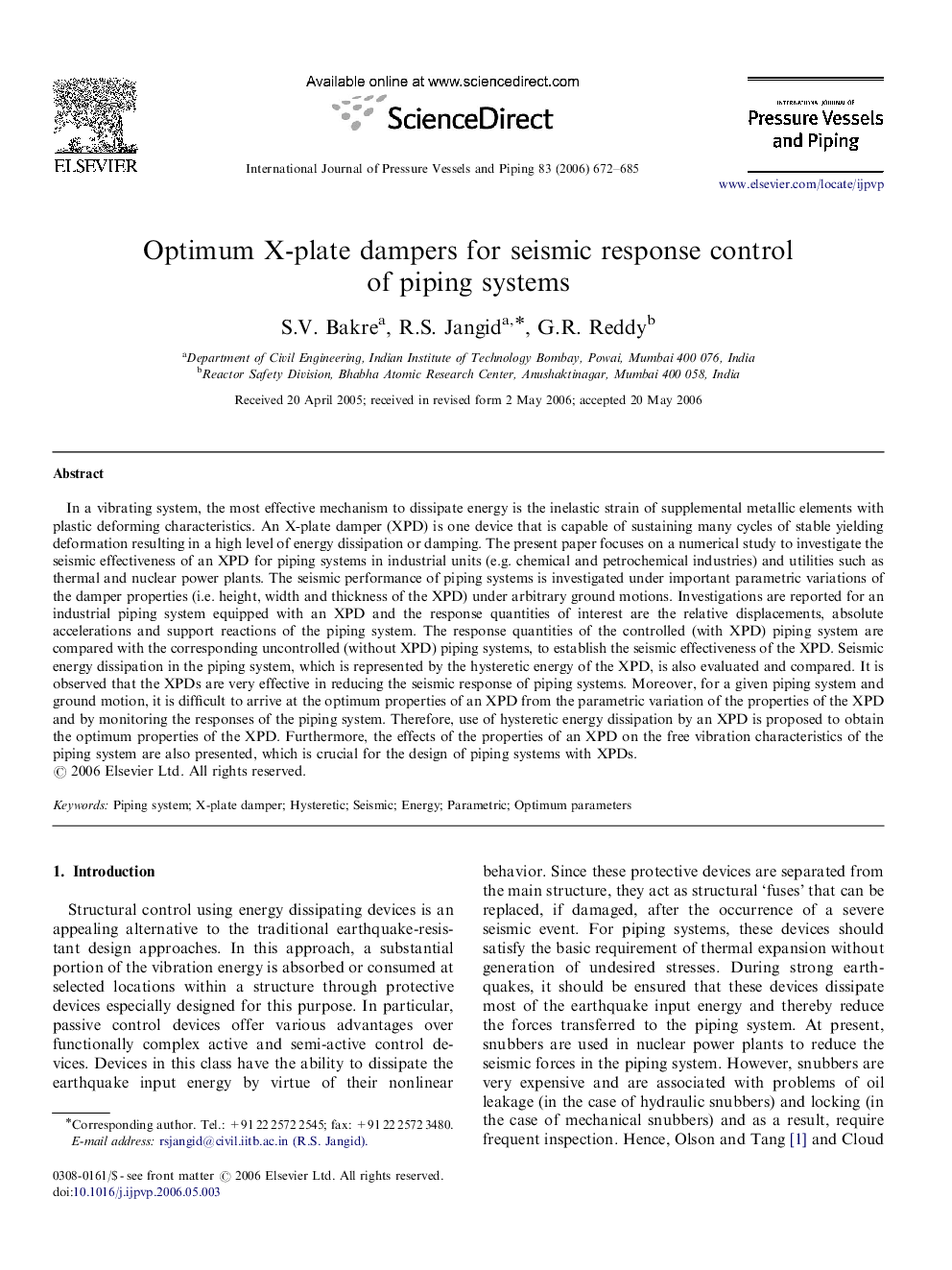| Article ID | Journal | Published Year | Pages | File Type |
|---|---|---|---|---|
| 787634 | International Journal of Pressure Vessels and Piping | 2006 | 14 Pages |
In a vibrating system, the most effective mechanism to dissipate energy is the inelastic strain of supplemental metallic elements with plastic deforming characteristics. An X-plate damper (XPD) is one device that is capable of sustaining many cycles of stable yielding deformation resulting in a high level of energy dissipation or damping. The present paper focuses on a numerical study to investigate the seismic effectiveness of an XPD for piping systems in industrial units (e.g. chemical and petrochemical industries) and utilities such as thermal and nuclear power plants. The seismic performance of piping systems is investigated under important parametric variations of the damper properties (i.e. height, width and thickness of the XPD) under arbitrary ground motions. Investigations are reported for an industrial piping system equipped with an XPD and the response quantities of interest are the relative displacements, absolute accelerations and support reactions of the piping system. The response quantities of the controlled (with XPD) piping system are compared with the corresponding uncontrolled (without XPD) piping systems, to establish the seismic effectiveness of the XPD. Seismic energy dissipation in the piping system, which is represented by the hysteretic energy of the XPD, is also evaluated and compared. It is observed that the XPDs are very effective in reducing the seismic response of piping systems. Moreover, for a given piping system and ground motion, it is difficult to arrive at the optimum properties of an XPD from the parametric variation of the properties of the XPD and by monitoring the responses of the piping system. Therefore, use of hysteretic energy dissipation by an XPD is proposed to obtain the optimum properties of the XPD. Furthermore, the effects of the properties of an XPD on the free vibration characteristics of the piping system are also presented, which is crucial for the design of piping systems with XPDs.
